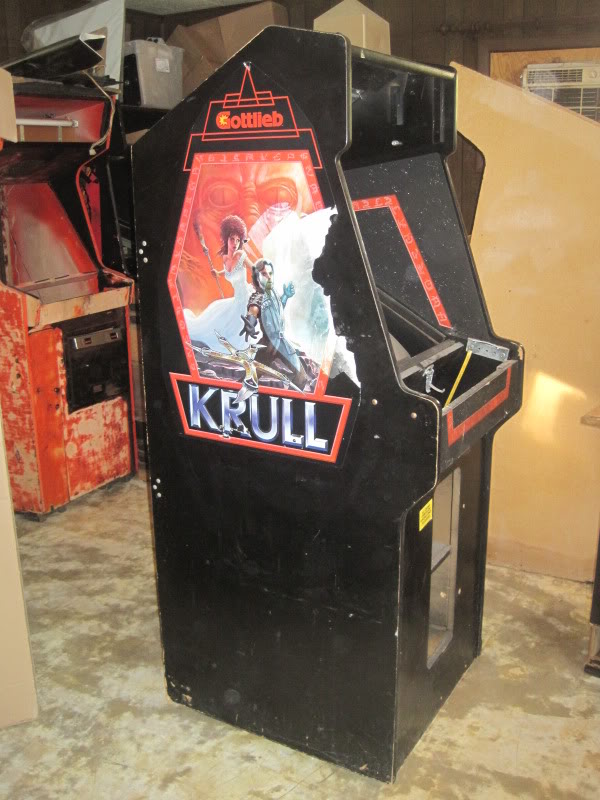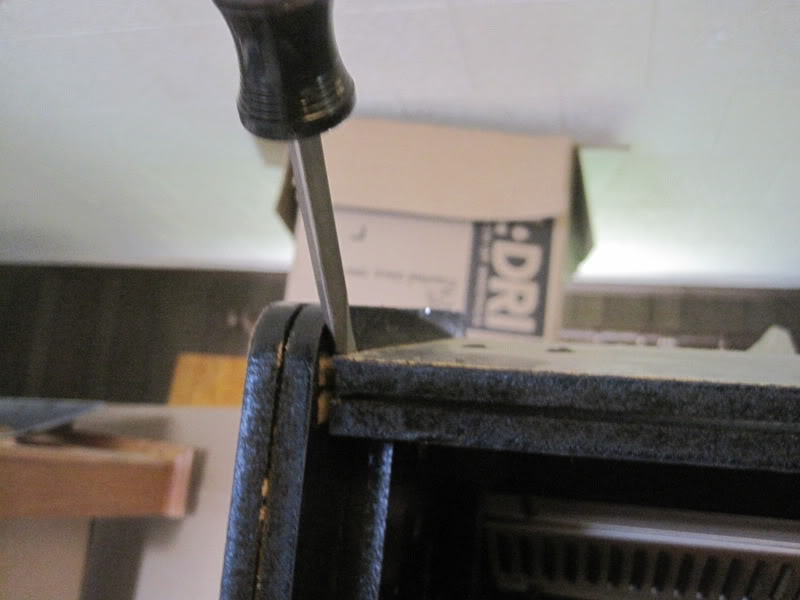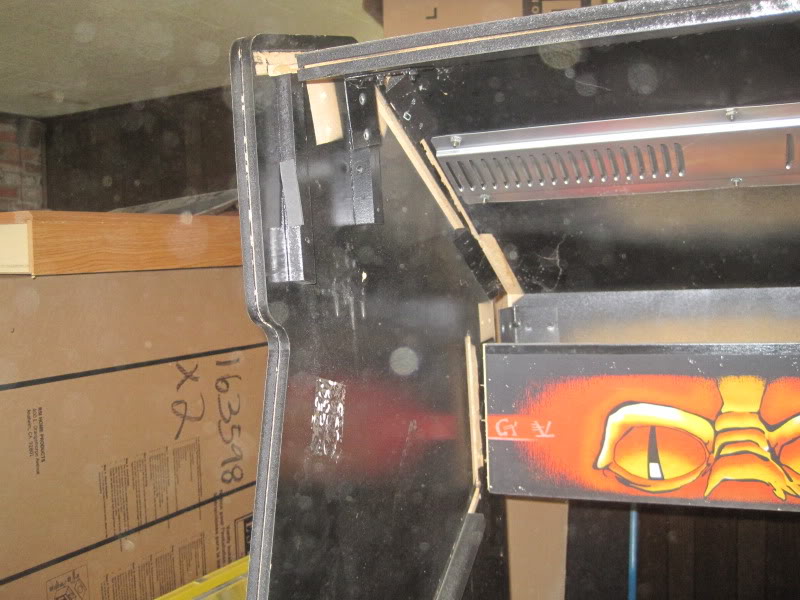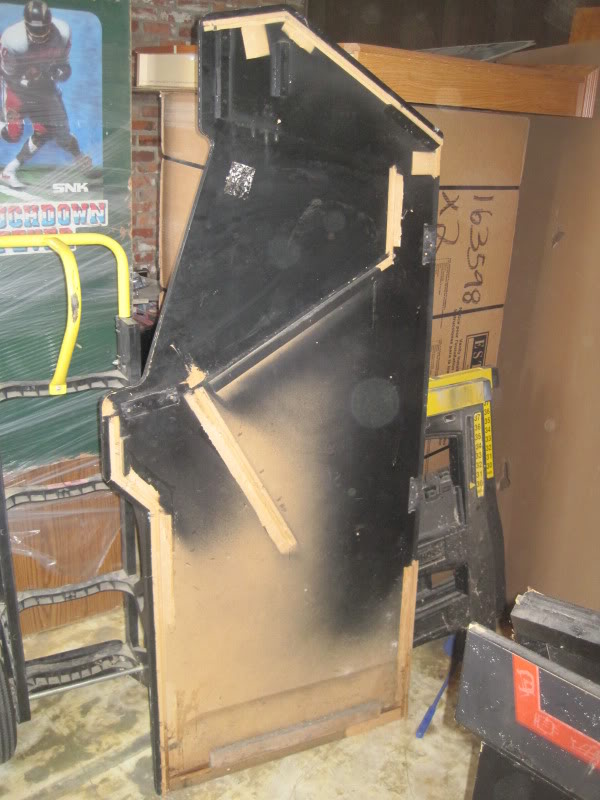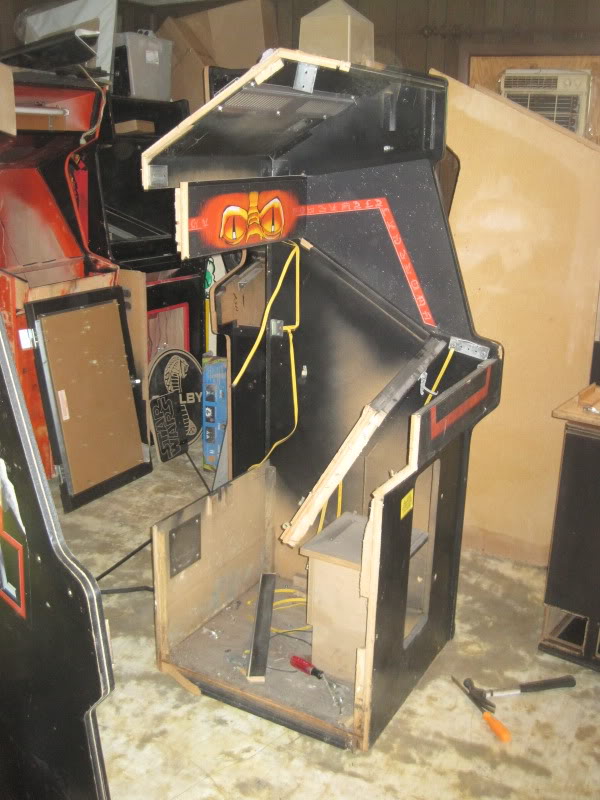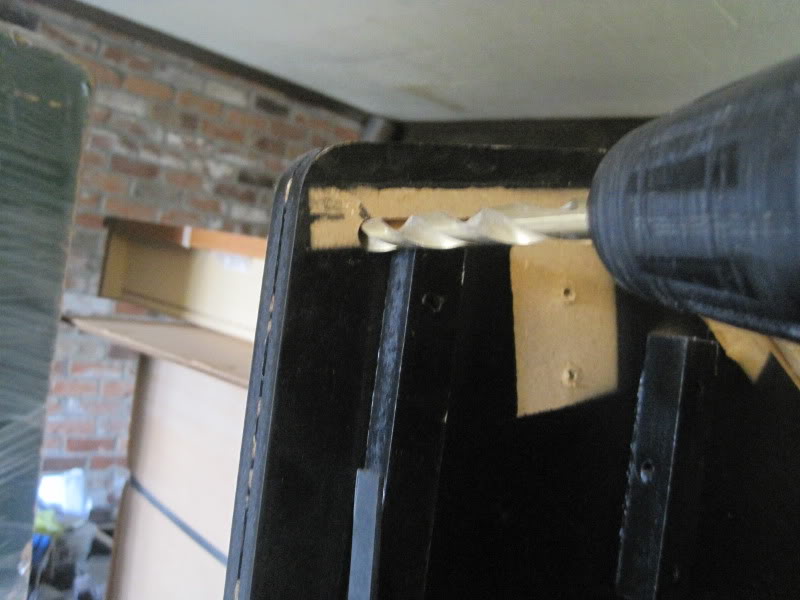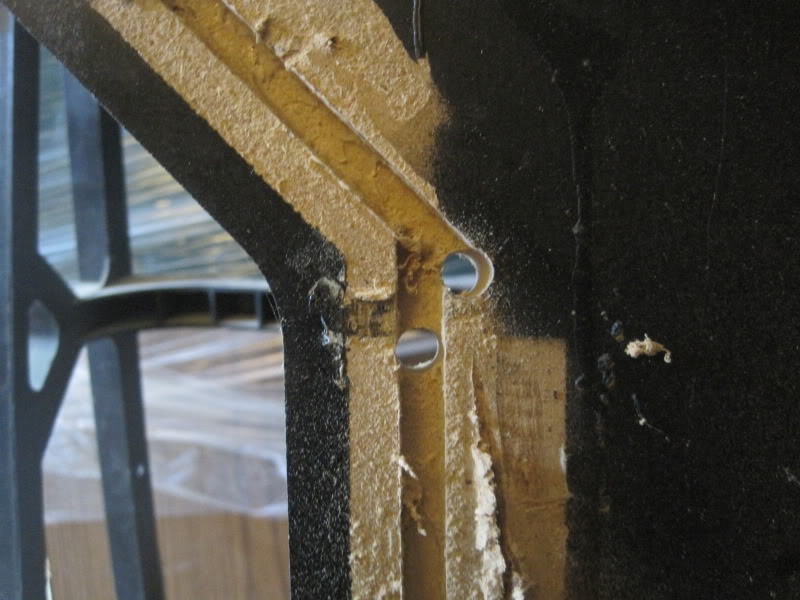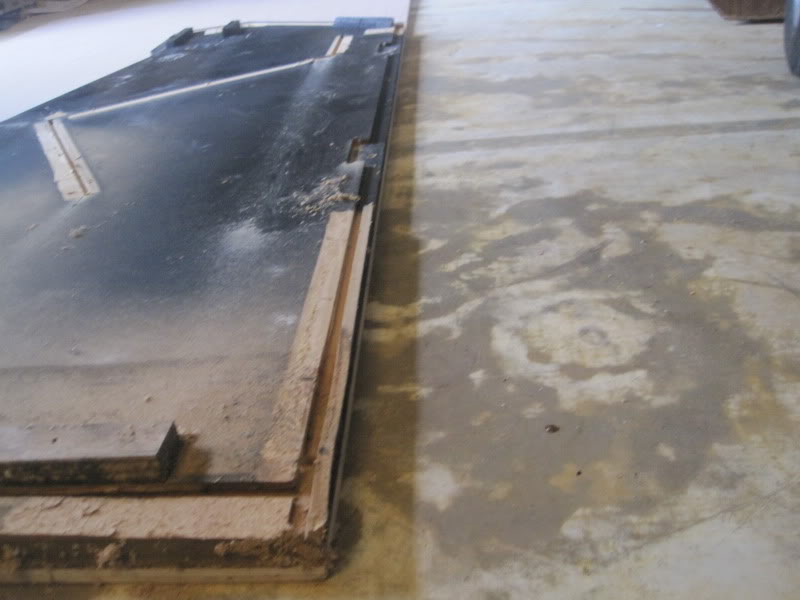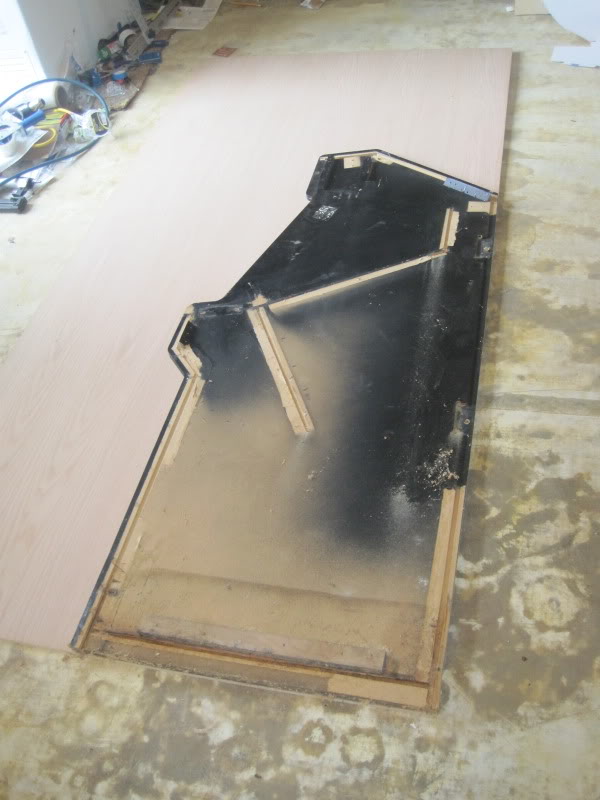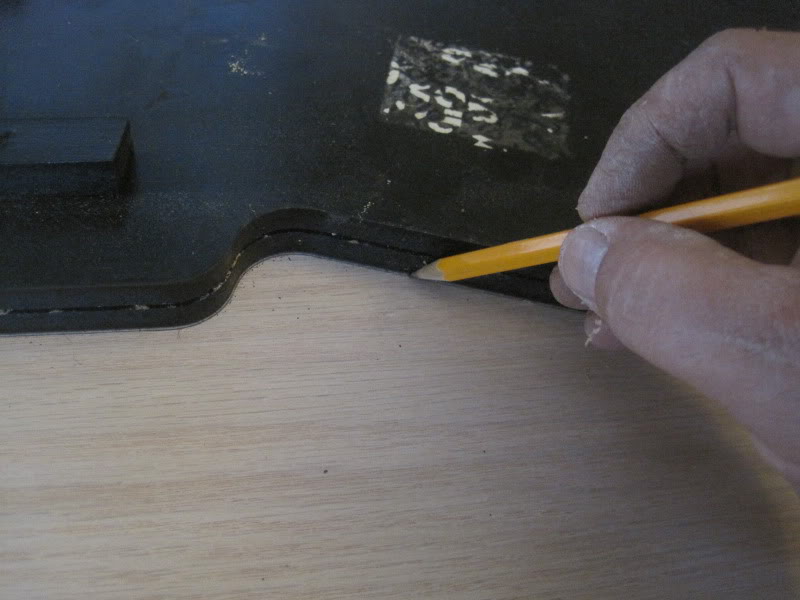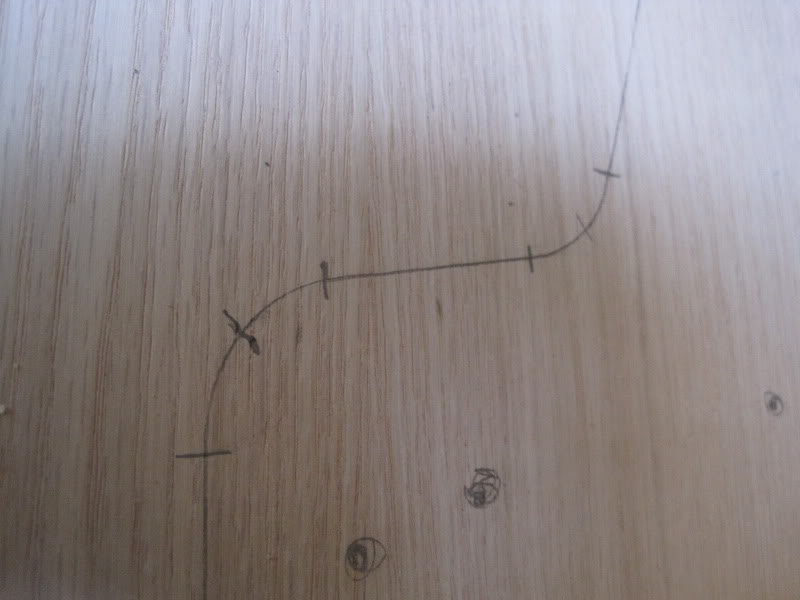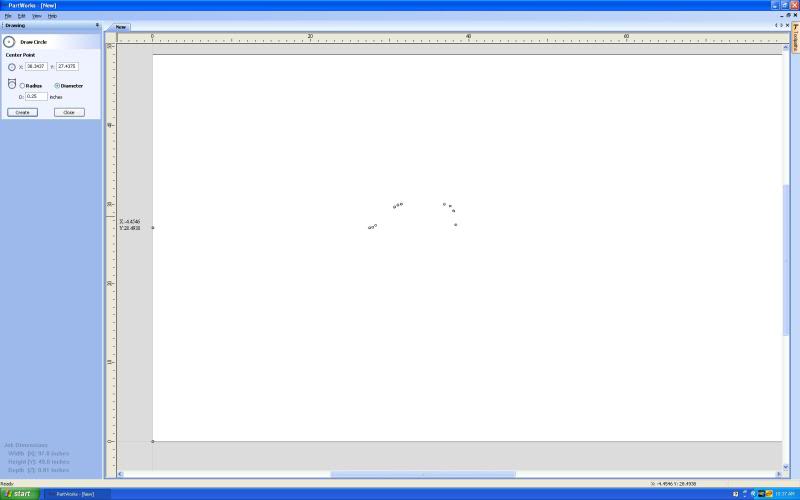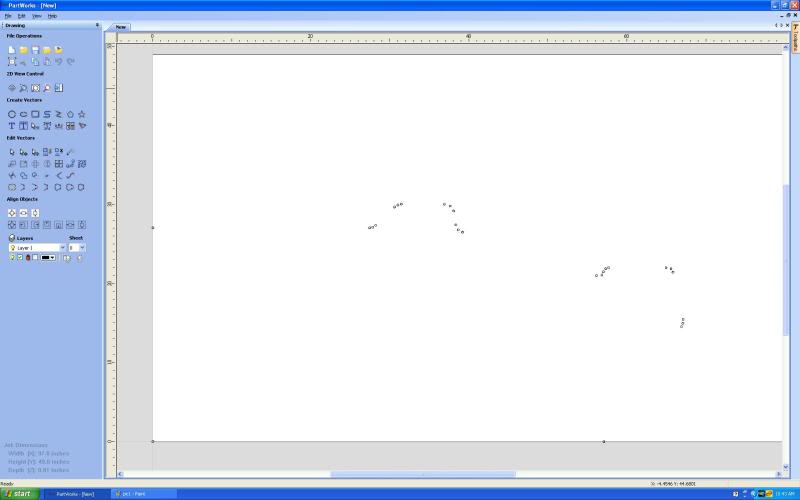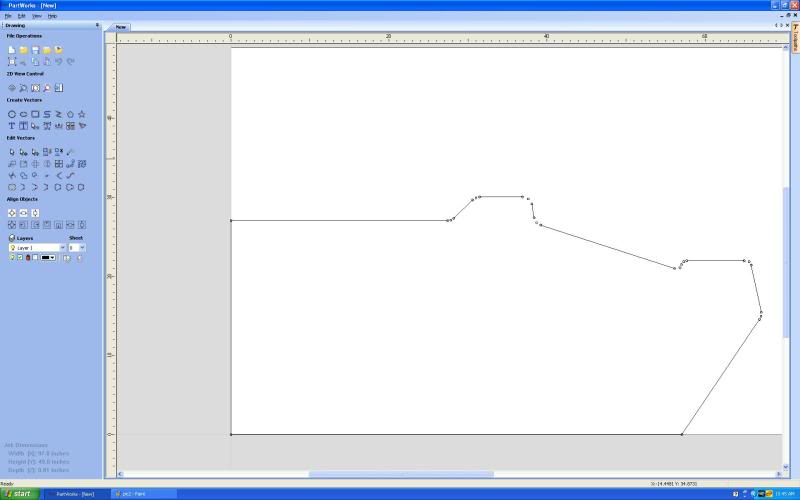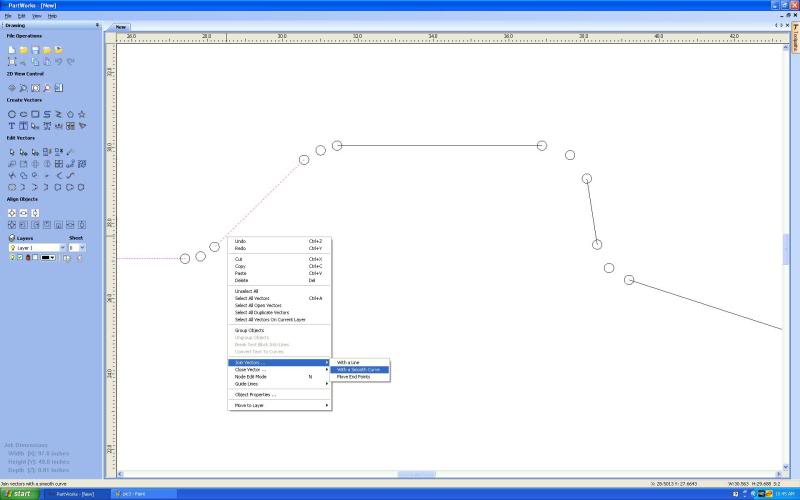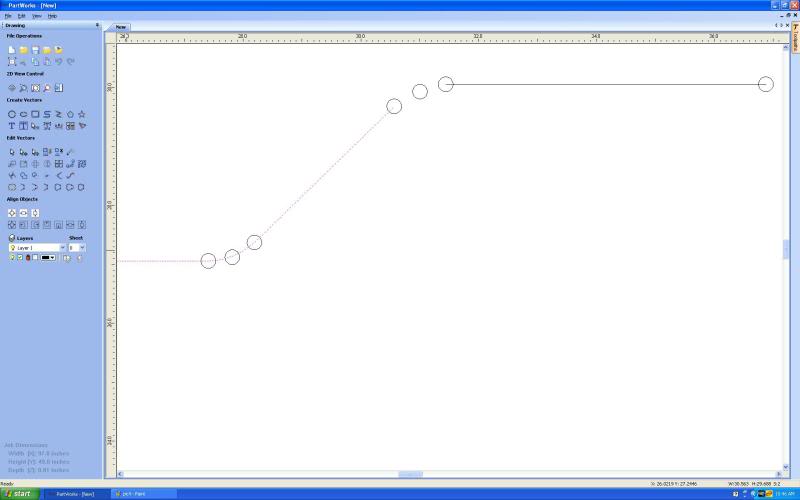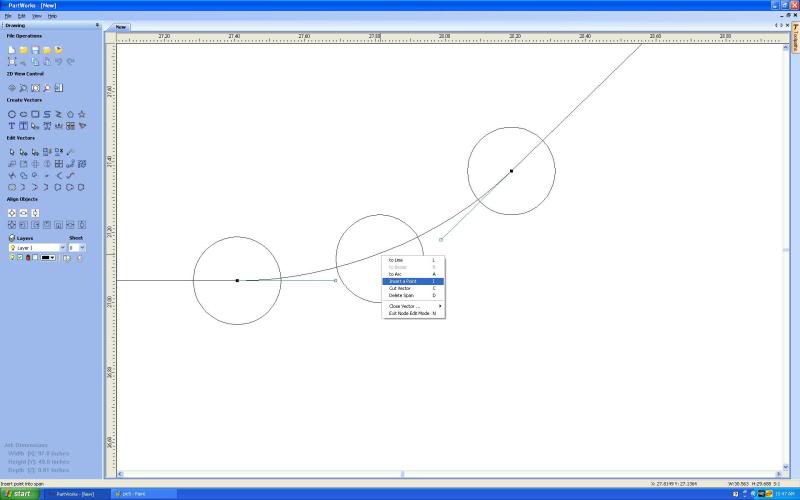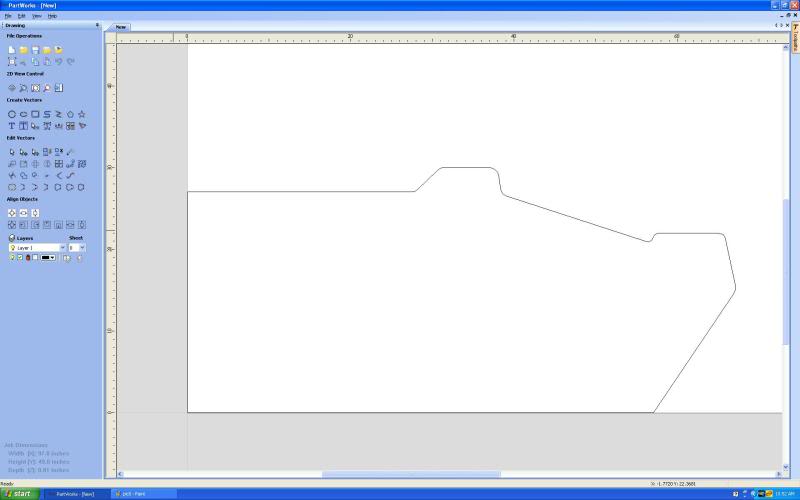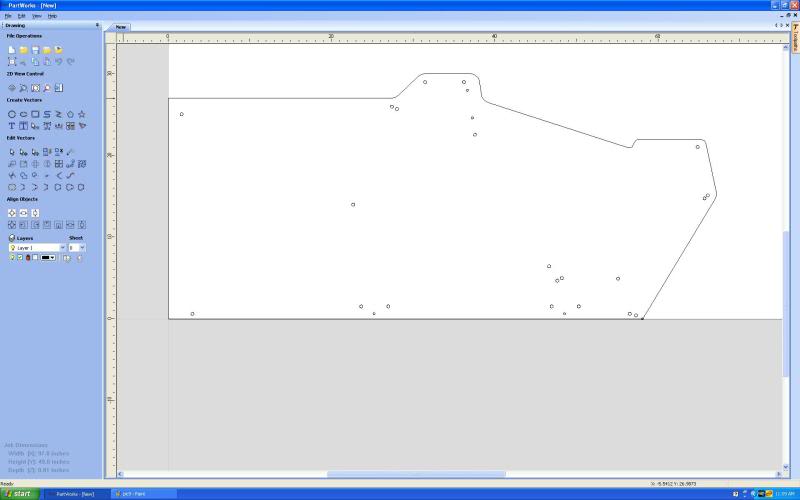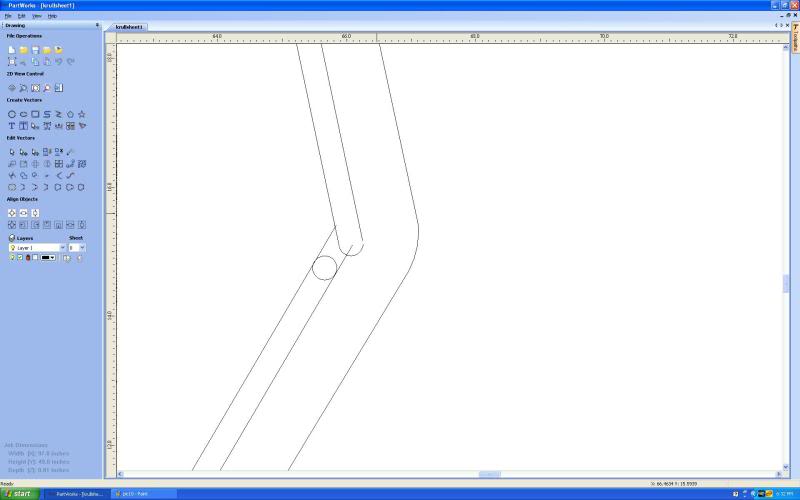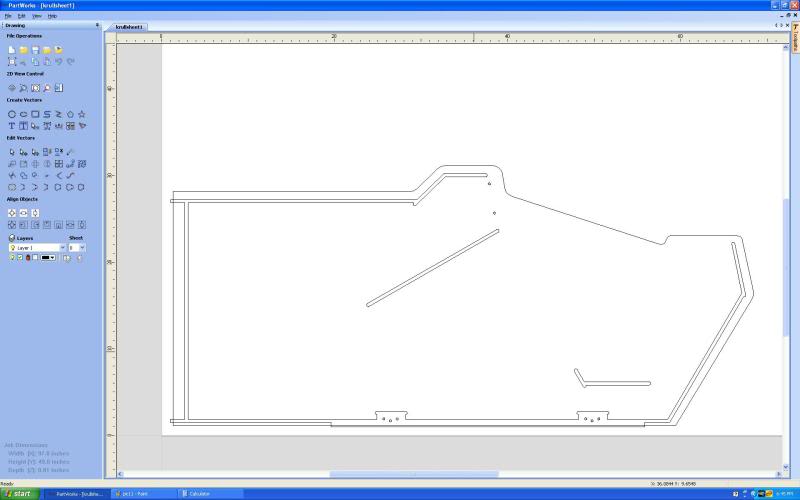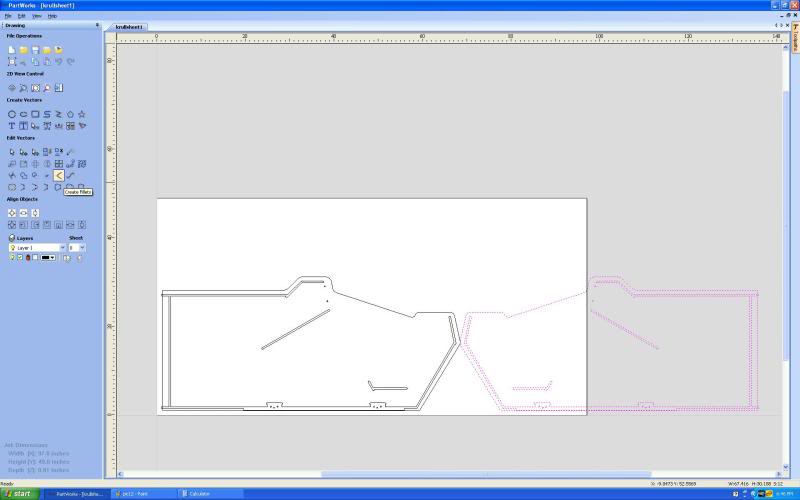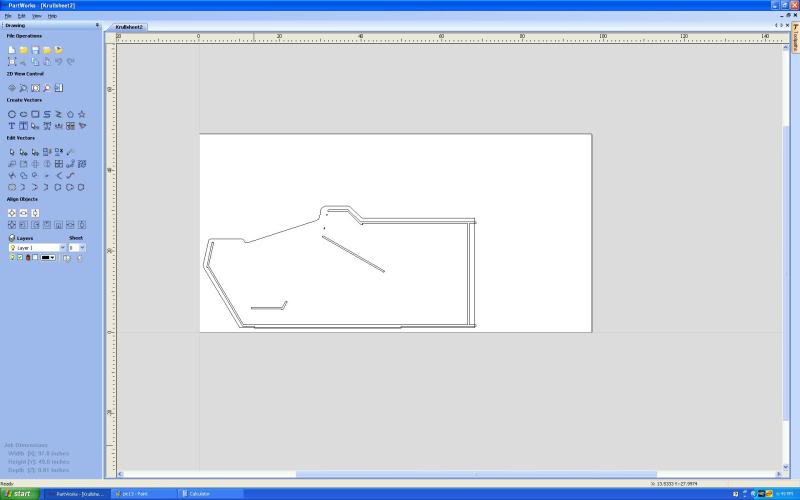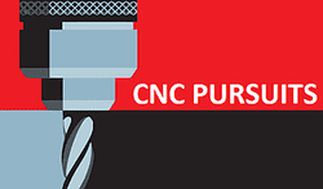Tracing cabinets, the DPtwiz way
This was posted on the http://forums.arcade-museum.com on 2/19/2012. Minor edits were made to make it more readable as a stand alone document as opposed to multiple forum posts. The methodology prescribed below is not the same method as I use, but illustrates alternatives.
How to: Copying cabinets for reproduction
how to: cabinet copying for cnc reproduction, or with a pattern bit and a hand router.
I've finally started on a guide for copying arcade cabinets for cnc reproduction. The software i use for vectoring the cabinet pieces is Partworks 2.0 made by Vectric. It's a stripped down version of artcam pro, i'm pretty sure you could use artcam pro to get the same results.
Here's our victim, a rough mostly empty Krull cabinet.
How to: Copying cabinets for reproduction
how to: cabinet copying for cnc reproduction, or with a pattern bit and a hand router.
I've finally started on a guide for copying arcade cabinets for cnc reproduction. The software i use for vectoring the cabinet pieces is Partworks 2.0 made by Vectric. It's a stripped down version of artcam pro, i'm pretty sure you could use artcam pro to get the same results.
Here's our victim, a rough mostly empty Krull cabinet.
This cabinet has tennon joints used in it's construction, which is common with
midway, Exidy, williams, and some other companies. Tennons are routed slots on
the side of the cabinet, typically 3/8" wide. Your game pieced in the center
like the game top are routed on the ends, 3/8" deep. When we make a toolpath to
route the ends of our panels, we will route it at .400 instead of .375 (3/8") so
our parts fit without having
to force them in place.
The first step to copying a cabinet is to strip it of all metal parts, wiring, everything but the wood. Next we will take pictures of it from every angle, inside an out. 3rd, we are going to take a contrasting color sharpie (silver works well on black) and trace the edges of the parts where they touch the game side, and do the tracing on the game side. This will give us reference to the parts orientation. This mainly concerns the tennon, since your part has the routed pocket on the ends, you need to know if it goes in with notch up or down. Also, it will show us part placement from the edge of the machine, so you know how far forward or back, up/down to put it for final placement.
Once all that is done, it's time to dismantle the cabinet. I prefer to tear off a side, and leave the rest standing for the time being. Look at both game sides to determine if there's any difference in the left/right sides. In the case of this game, they were identical, with the exception of the bolt holes for the back door hinges. So, we will take the side with the hinge holes, we can delete them off the mirror copy we make when we do the other side.
I use a large flatblade screwdriver and a hammer. Start by stripping out the blocking inside the cabinet on the side we chose that that had more detail than the other (hinge holes in this case) Make sure you used a sharpie around the blocks, thier placement matters sometimes, so they don't interfere with interior parts.
to force them in place.
The first step to copying a cabinet is to strip it of all metal parts, wiring, everything but the wood. Next we will take pictures of it from every angle, inside an out. 3rd, we are going to take a contrasting color sharpie (silver works well on black) and trace the edges of the parts where they touch the game side, and do the tracing on the game side. This will give us reference to the parts orientation. This mainly concerns the tennon, since your part has the routed pocket on the ends, you need to know if it goes in with notch up or down. Also, it will show us part placement from the edge of the machine, so you know how far forward or back, up/down to put it for final placement.
Once all that is done, it's time to dismantle the cabinet. I prefer to tear off a side, and leave the rest standing for the time being. Look at both game sides to determine if there's any difference in the left/right sides. In the case of this game, they were identical, with the exception of the bolt holes for the back door hinges. So, we will take the side with the hinge holes, we can delete them off the mirror copy we make when we do the other side.
I use a large flatblade screwdriver and a hammer. Start by stripping out the blocking inside the cabinet on the side we chose that that had more detail than the other (hinge holes in this case) Make sure you used a sharpie around the blocks, thier placement matters sometimes, so they don't interfere with interior parts.
Start with the edge and tap the screwdriver in, and pry back and forth, move
around the entire side to loosen it up. Once you have it fairly broke loose, you
can smack the side with a hammer to get it completely free. In this case it's a
ply cab, if it were particle or mdf, you can accidentally hammer a hole right
through it, so best to use a screwdriver for particle cabs to get the side all
the way free.
Here's our side completely removed, and the rest of the machine:
Now that we have our cabinet side off, we need to be able to transfer the
tennons over to our sheet of plywood when we trace our cabinet side. We do this
by drilling through the cab sides, using the tennons for a guide with a 3/8"
drill bit. Drill out where the tennons start and stop.
Sometimes tennons intersect, and i usually drill a little below the intersection
for accurate placement. Also, have a notebook handy and sketch out the paths the
tennons take, and make circles where you drilled the tennons, so it helps you
figure out what one is where.
Once you've drilled them out, go to the back side and clean around the drill
holes, so nothing will impede the side from laying flat on the plywood.
Next, lay your cab side down on plywood, and line up the back and bottom with the plywood edges.
Next, lay your cab side down on plywood, and line up the back and bottom with the plywood edges.
Once it's all lined up, we are ready to trace.. the 4 foot dimension of the ply
is Y and the 8 foot side of the ply is X. this comes in to play once it's
traced. Trace around the edge, (make sure you took the T molding off) with a
sharp pencil. I usually have to sharpen it a few times while i do this. Also
trace around inside the drill holes for the tennons.
Once we have it traced, we can set the cab side out of the way. I have a 4 foot
T square, and a good tape measure for the next part. First, we need to do a
little work on the tracing. I use a small ruler, and mark center on all our
circles for the tennons. On the game side tracing, i put a small line where all
the straight lines start and stop. Then i go back and i mark the curves. curves
smaller than 2 inches in radius, i mark center. Large broad curves, i mark about
every 2 inches, aggressive curves that change in radius alot, i mark the curve
at every inch.
Next i start measuring, i do all the Y dimensions first, drawing an arrow point
up to signify what direction i measured from, and write Y (dimension) once i am
done with that, i do the same for X.
Use the notepad, and write on the first line X and your first dimension. next line Y and the dimension for the mark we started on for X. skip a line, and do the same. if you started writing down dimensions where a line started, mark line start by it, and the next set of measurements where the line stops, write line stop. that way we will know what is a line, and what is a reference for our curves. Do the tennon circles on a seperate page. Once we have all of this on our notepad, we can go into our software, and start laying out the cab side using .25" circles.
Now, to the computer...
Here's a screenshot of Partworks, and we've already started vectoring our cabinet side. we are using the circle tool. pretty simple, put in your X dimension, Y dimension, and size of the circle, hit enter, and it places it on the screen.
Use the notepad, and write on the first line X and your first dimension. next line Y and the dimension for the mark we started on for X. skip a line, and do the same. if you started writing down dimensions where a line started, mark line start by it, and the next set of measurements where the line stops, write line stop. that way we will know what is a line, and what is a reference for our curves. Do the tennon circles on a seperate page. Once we have all of this on our notepad, we can go into our software, and start laying out the cab side using .25" circles.
Now, to the computer...
Here's a screenshot of Partworks, and we've already started vectoring our cabinet side. we are using the circle tool. pretty simple, put in your X dimension, Y dimension, and size of the circle, hit enter, and it places it on the screen.
With Krull, i started in the bottom left corner, so it was X = 0 and Y=0 and we
have a circle in the bottom corner. the next circle, was the one directly above.
that's where the front bottom of the game was, and it was X=0 Y=24.0625 (i'm
guessing what it was lol) then i keep entering all of our X Y coordinates,
untill i have all the circles in place.
The pic above shows all our outside border circles are entered. Now, we go back
and see what circles where start and stop points of lines. We select the line
tool, and start at the first one. With any closed objects in partworks, it has a
"snap to" feature. if you take your line tool, (looks like a + sign on the
screen when in use) and move over a circle, it will jump to the center, we left
click to start our line, then move to the circle that is the end of our line,
and it will jump to the center there, and we left click again. Then on the line
tool window on the left, we click done, and that completes our line, then we
repeat this until all our lines are in place. Here's the progress:
Now we are going to start joining our lines together. Click your first line,
then while hold shift, click the next line, it will highlight them both. Right
click and select join vectors with a smooth curve.
Now our line is joined. Notice our curve doesn't quite go through the center of
our middle circle we made as a proof mark.
Now with the node editing tool, we click on out line, place our point in the
center of the curve, right click and select insert point. left click and hold
while on the point, drag it to the center of our circle, and it will "snap to"
and then we let go, and our curve is accurately placed. we also do this with
broad curves, inserting points and dragging it to our circle centers to get
accuracy.
Here's what i looks like once it's all joined together, and we aligned our
curves, and we deleted all our .25 circles.
Now we have to start on the tennon circles, and we use .375 with the circle
tool. Also, on this cab the hinge holes, and the Control panel bracket holes are
.25, so they are noted on the plans. With the software, it won't cut a .25
circle with a .25 bit, it always says it can't fit in the vectors, so we make
our .25 circles .251 to bypass this. Here's the tennon circles layed out.
We made a drawing earlier showing the paths the tennons take on the cab, and
where our circles were drilled, as you can see this would be confusing without
some sort of guide to figure out what goes where!
the easiest ones are the ones that are inline, line the game bottom tennon on the cab side. it runs vertical on our plan. Edit the bottom circle with the node editing tool, taking off the top half of the circle, then take the bottom half off the top circle, and connect the sides of the circles together with lines. It gets tricky on the tennons that run at angles. I use the line tool, guestimate on the side of the circle and draw a line up to the next circle. then i can use the node editing tool to drag the line around until it looks right. Some of our circles we drilled low, away from an intersection.. now you can drag the line past the circle, and use the edge of the circle for a guide.
the easiest ones are the ones that are inline, line the game bottom tennon on the cab side. it runs vertical on our plan. Edit the bottom circle with the node editing tool, taking off the top half of the circle, then take the bottom half off the top circle, and connect the sides of the circles together with lines. It gets tricky on the tennons that run at angles. I use the line tool, guestimate on the side of the circle and draw a line up to the next circle. then i can use the node editing tool to drag the line around until it looks right. Some of our circles we drilled low, away from an intersection.. now you can drag the line past the circle, and use the edge of the circle for a guide.
here's a finished side, with all the tennons joined together.
now we save our file and named it krullsheet1. Now, i select all vectors, and
click the mirror tool, and mirror our cabinet side to the right..
so now we have our other side, and we need to change it, since the other side
does not have hinge holes, or a pocket for the hinges. we click and delete the
hinge bolt circles, then use our node editing tool to remove the recess area of
the hinges. Last, we select our lines (open vectors) and use the right click,
join vector with a line. Here's our other side cleaned up and modified to match
the factory right side.
we've also moved it to it's own sheet named krullsheet2. Also, the tennons.. we
are going to use the pocket toolpath. Any tennons that go to a cabinet edge,
such as you see on the cab bottom, must go past the border of the cab profile by
.125 so our bit will route the entire tennon, and not stop short of the edge!
Last updated 7/29/2015
|
|
Special thanks to the contribution by: Chris for the Pac-Man cocktail plans
All graphics/images/cabinet designs on this site are copyrighted by the their original owners. ClassicArcadeCabinets.com makes no claim to said such rights and provides the cabinet designs for collectors and hobbyist of the original arcade coin-op machines. Images and graphics are for reference only. Any copyright holder wanting their images or reproductions removed from this site should contact us and we will immediately remove these images.
SITE LAST UPDATED January 16, 2024
|
